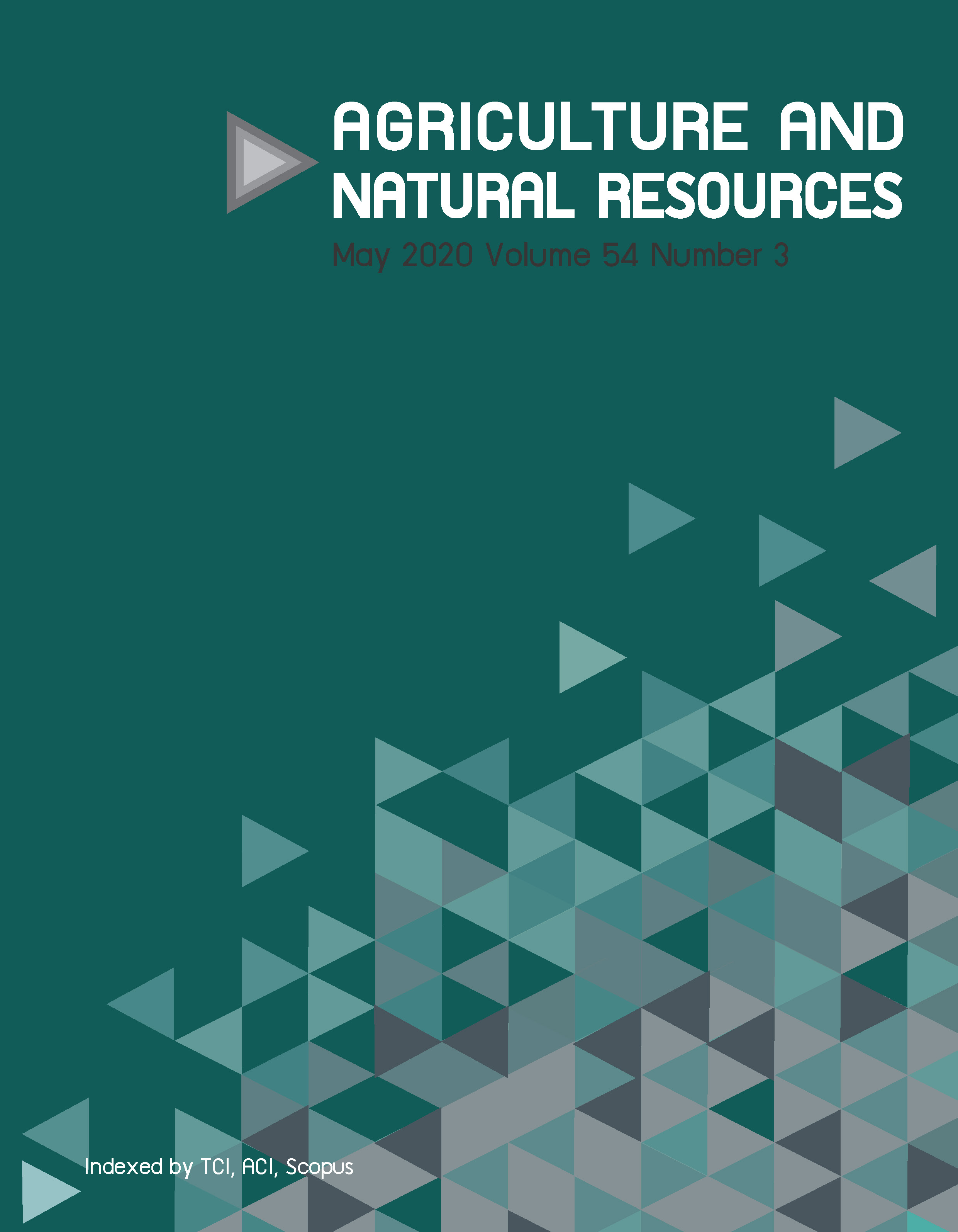Combining ability and heritability for yield and its related traits in Thai upland rice (Oryza sativa L.)
Abstract
In a rice breeding program, breeders select the best combinations using combining ability analysis while heritability is used to study the degree of variability of the traits transmitted to progenies. Evaluations were studied using a half-diallel mating design of the combining ability and heritability of eight genotypes of Thai upland rice (Hawm Satun, Dawk Pa-yawm, Dawk Kham, Nual Hawm, Dawk Kha, Hawm Mali Doi, Khun Nan and Goo Meuang Luang) which generated 28 F1 hybrids. A randomized complete block design with two replications was used. Highly significant differences for genotypes, general combining ability (GCA) and specific combining ability (SCA) were noticed for all 10 of the traits under evaluation. The significance of GCA and SCA indicated that both additive and non-additive genetic effects contributed to a trait’s inheritance. The parental line Hawm Mali Doi had the highest GCA effect in desired directions for plant height, days to flowering and maturity; Nual Hawm for panicle number; Khun Nan for tiller number, panicle length and 1,000 grain weight; and Dawk Pa-yawm for number of filled grains, spikelet fertility and grain yield. These could be regarded as good general combiners for those characters. Five hybrids were found with a significant positive SCA effect, the highest value was obtained from Nual Hawm × Khun Nan followed by Dawk Pa-yawm × Hawm Mali Doi for grain yield, which could be regarded as good specific combiners for further improvement in the upland rice breeding program. Estimation of narrow sense heritability in response to selection in the next generation was medium to high (35.67–56.72%) for grain yield and its components.
Downloads
Published
How to Cite
Issue
Section
License
Copyright (c) 2020 Kasetsart University

This work is licensed under a Creative Commons Attribution-NonCommercial-NoDerivatives 4.0 International License.
online 2452-316X print 2468-1458/Copyright © 2022. This is an open access article under the CC BY-NC-ND license (http://creativecommons.org/licenses/by-nc-nd/4.0/),
production and hosting by Kasetsart University of Research and Development Institute on behalf of Kasetsart University.







